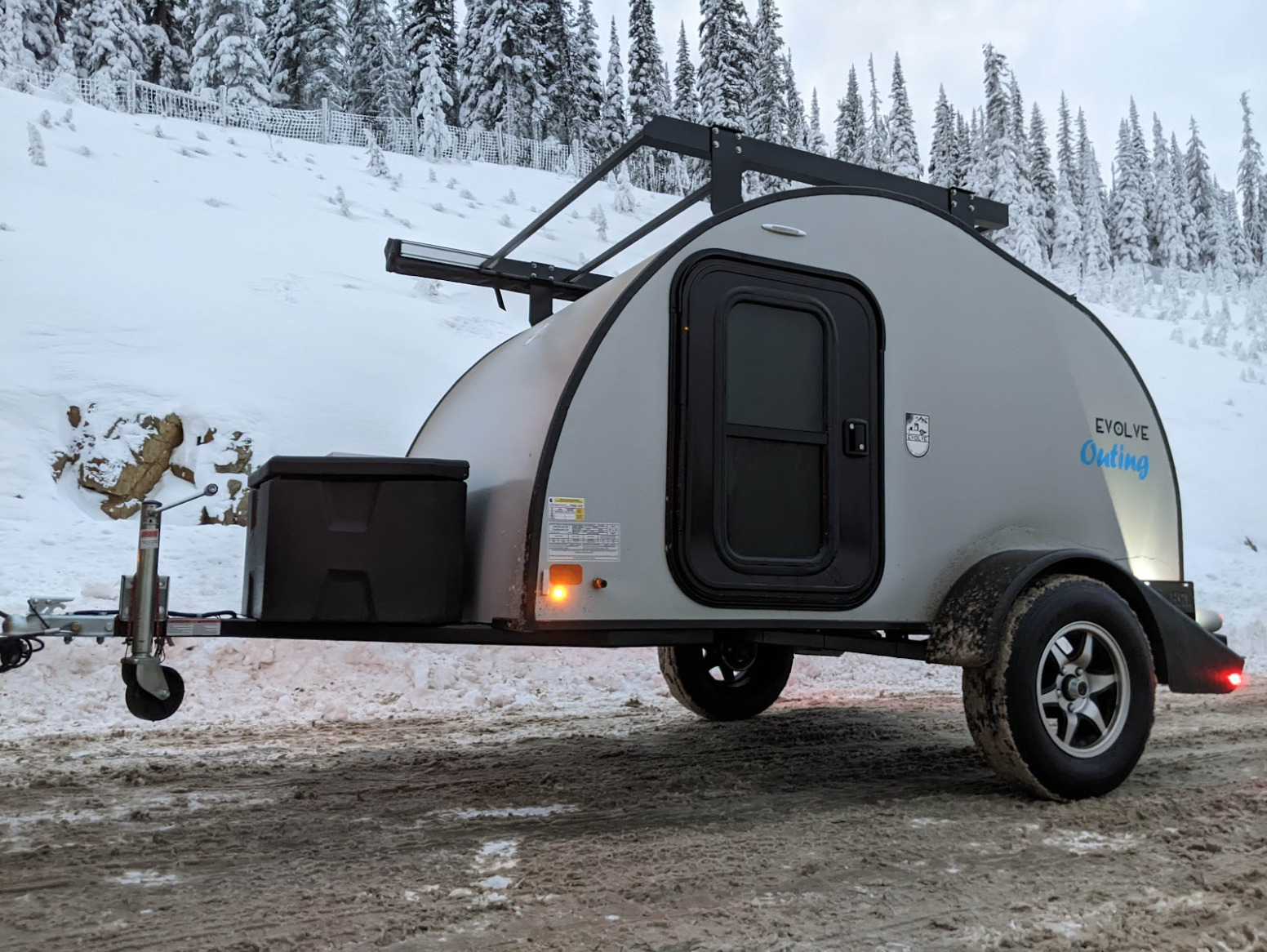
Winter camping in your teardrop trailer can be a fun and exciting way to experience the great outdoors during the colder months. It’s essential to be well-prepared while winter camping to ensure a safe and comfortable trip. Following some basic rules and guidelines can help you get the most out of your winter camping experience.
BONUS: Read until the end for some expert advice from @gertrudethecamper
Is Your Trailer Insulated?
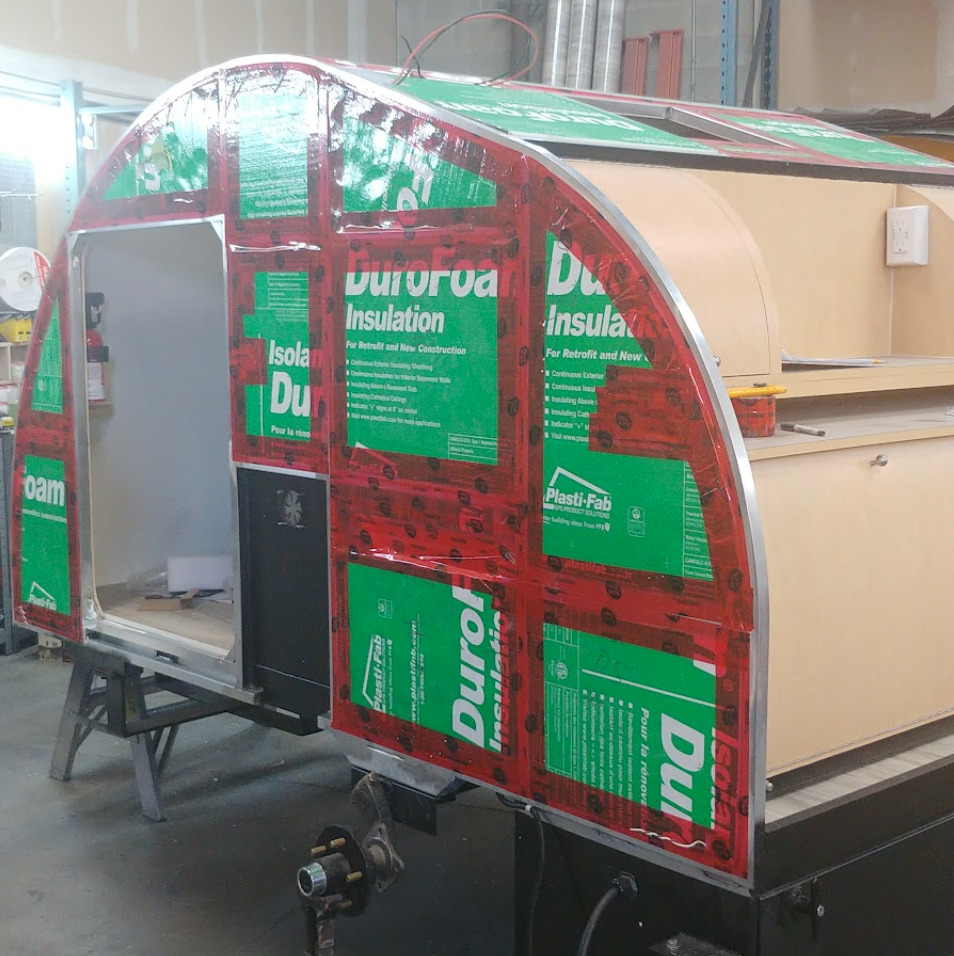
If you have an Evolve trailer you know that it contains insulation throughout the floor, walls, roof, hatch door, and entrance doors. However, if you have a different trailer that contains little or no insulation you need to make preparations to ensure you can manage the heat in the trailer. This can be done by replacing or adding weatherstripping around your doors and windows which will seal any gaps and prevent drafts from entering your trailer.
Heat your trailer
A reliable heating system will make the difference between staying cozy or heading home early. A small thermostatic space heater is essential for staying warm in a teardrop trailer during the winter. Make sure to follow all safety guidelines when using a space heater, and never leave your heater unattended. If you do not have the ability to operate a thermostatic space heater try using an electric blanket. The best way to use an electric blanket is by putting it between your comforter and bedsheets. When the blanket is warmed, the heat is trapped between the sheets keeping the heat on your body and bed. By having heat directly on your body you are able to warm up faster than trying to climatize to your environment.
Protect your water supply
Freezing temperatures will cause your water supply to freeze, which can be a major inconvenience while camping. Store water bottles inside your trailer to prevent them from freezing. If your trailer has water lines, freezing water may cause them to block or even burst. This is because water expands when it freezes. To prevent this, you can insulate your water lines with heat tape or wrap them in foam insulation.
Plan your route
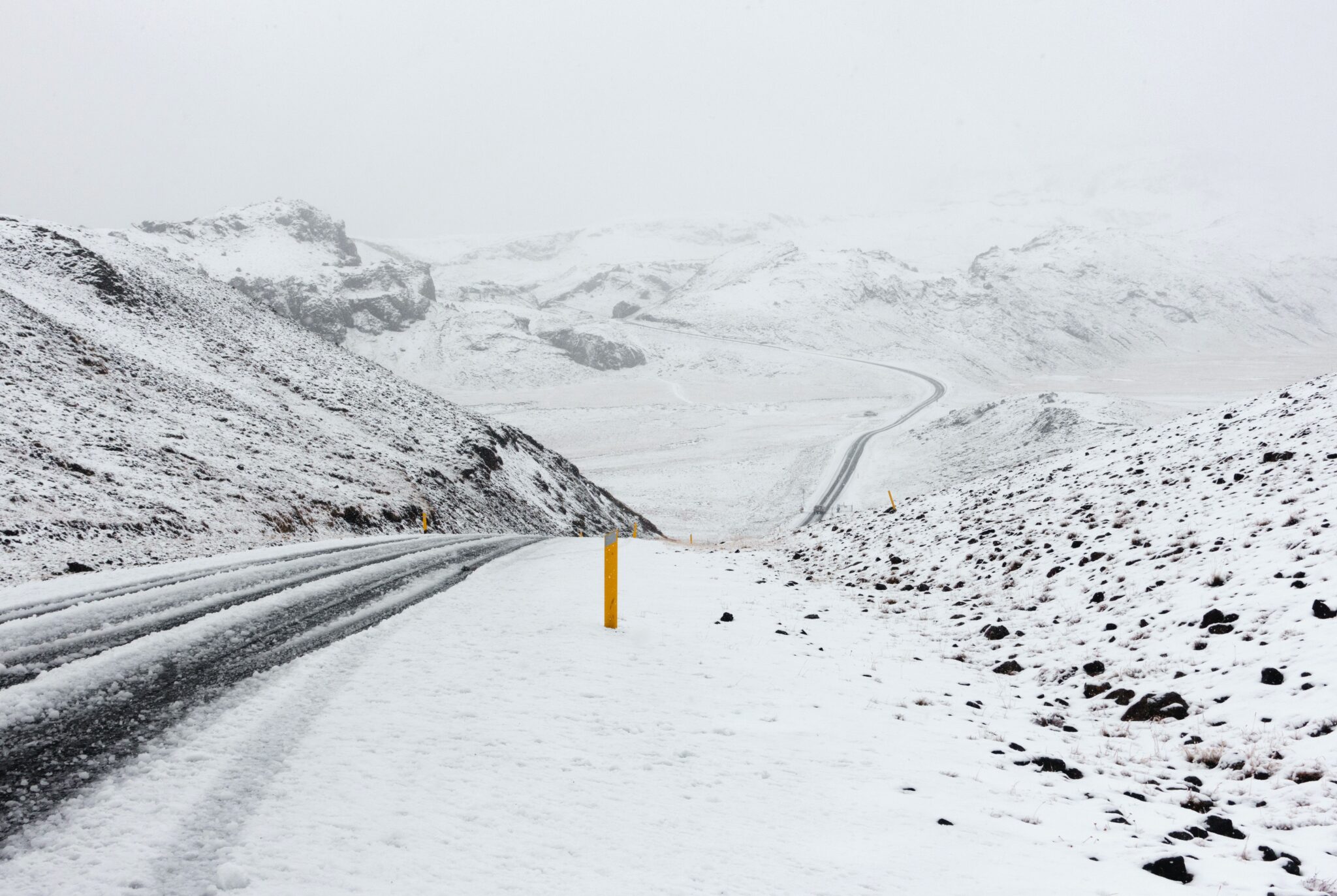
It’s important to plan your route carefully to avoid any areas with heavy snow or ice. Check the weather forecast or tune in to the local radio channels for live updates on road conditions and potential closures. It’s also a good idea to have alternate routes planned as a backup in case you get stuck or encounter other unexpected challenges. Make sure you consider where you can stop for fuel along your route. Getting caught in a storm with low fuel can be very dangerous.
Consider tire chains
If you plan on taking your trailer on snowy or icy roads, use tire chains to improve traction. In some areas, the use of snow chains may be required by law, especially in mountain passes or other areas with heavy snowfall. Failing to use snow chains when required can result in penalties and fines so do your research beforehand.
Awning and Room Enclosure

If you have an awning attached to your trailer, it is best to set it up but angle one side of it so the snow can fall off rather than buckling the top canopy. This gives you some coverage from the elements during your stay. Some awnings also offer room enclosures that can attach to the awning giving you a second room and even more protection from the elements.
Keeping your trailer in good condition and staying safe while winter camping should always be your first priority. To make your experience more enjoyable, you can follow these tips and tricks to stay comfortable in your trailer.
Dress in layers
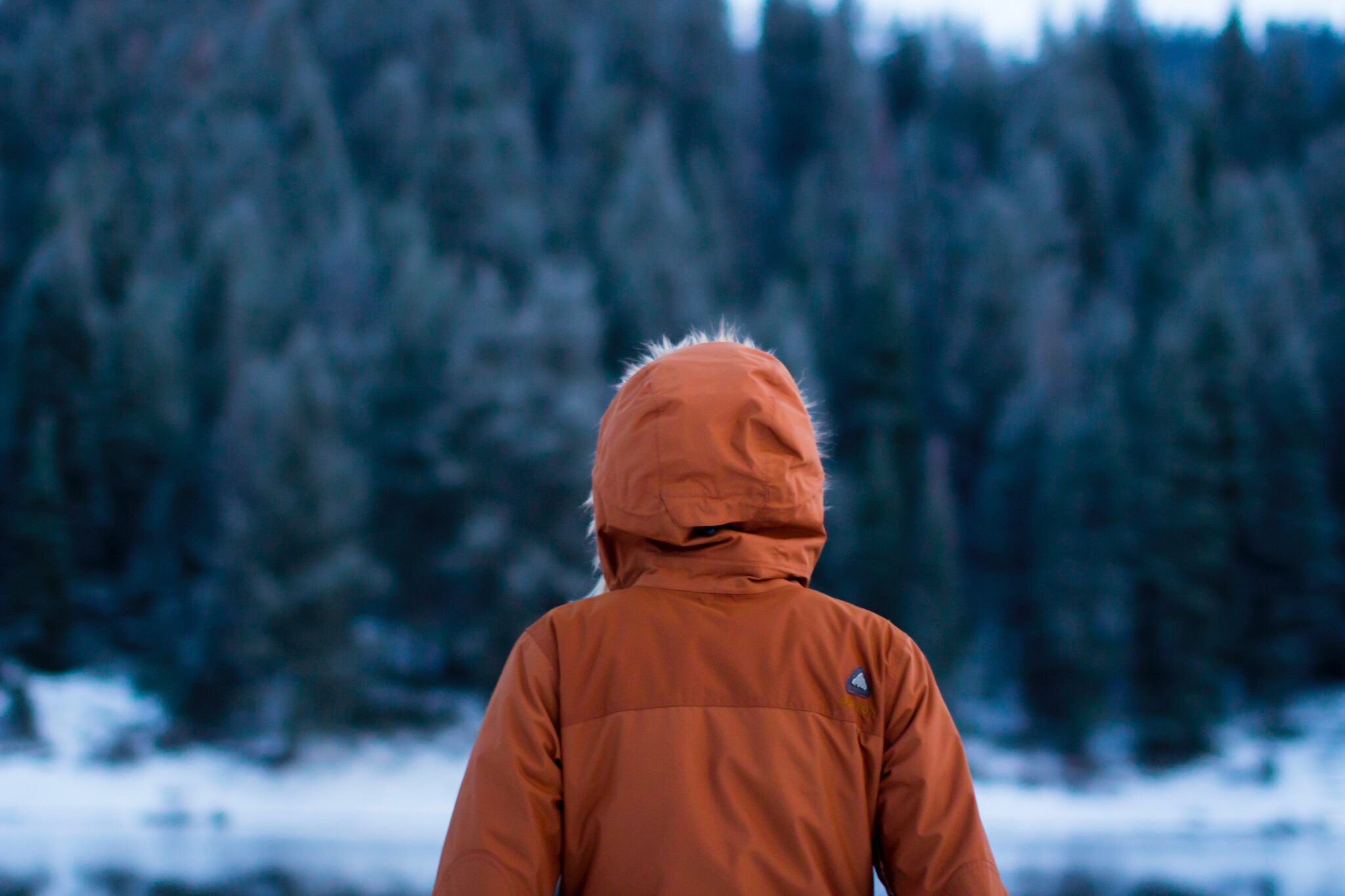
Layering your clothing can help to trap heat and keep you warm. Start with a moisture-wicking base layer like thermals or leggings, add a mid-layer for insulation like a fleece or wool sweater, and finish with an outer layer to protect against the elements like a jacket or parka. Look for materials that are warm, moisture-wicking, and breathable. Wool, synthetic fabrics, and down are all good choices for winter clothing. Protect your hands, feet, and head with gloves, hats, and warm socks. Invest in a good pair of winter boots that are waterproof, insulated, and have good traction.
Use warm bedding
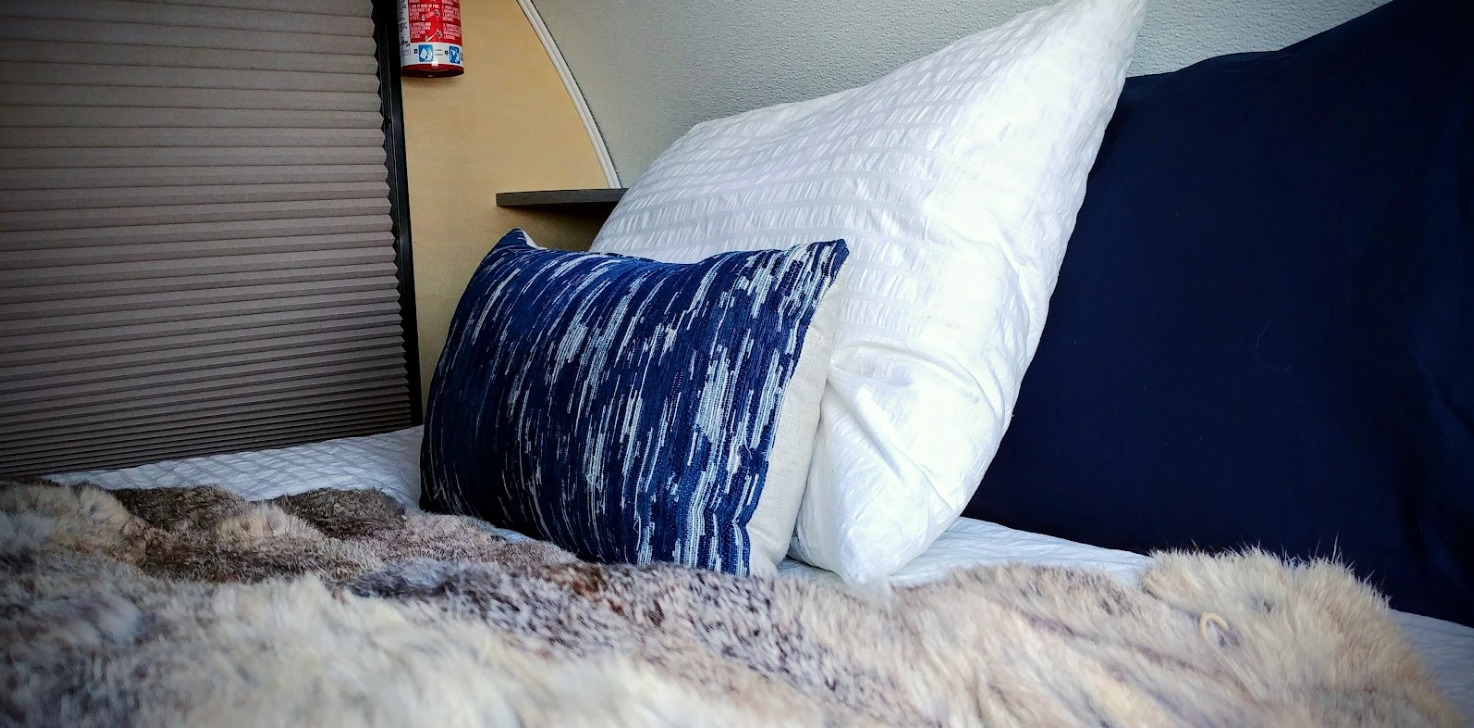
High-quality comforters or duvets are filled with natural materials like down or wool. Synthetic materials like polyester can also be effective at trapping your body heat. A heating pad or electric blanket can provide extra warmth while winter camping and warm your bed up before you get in.
Use hand and foot warmers
Hand and foot warmers are small packets that produce heat when activated. These can be placed in your gloves or boots to help keep your hands and feet warm.
Bring firewood, a propane fire pit or a propane patio heater
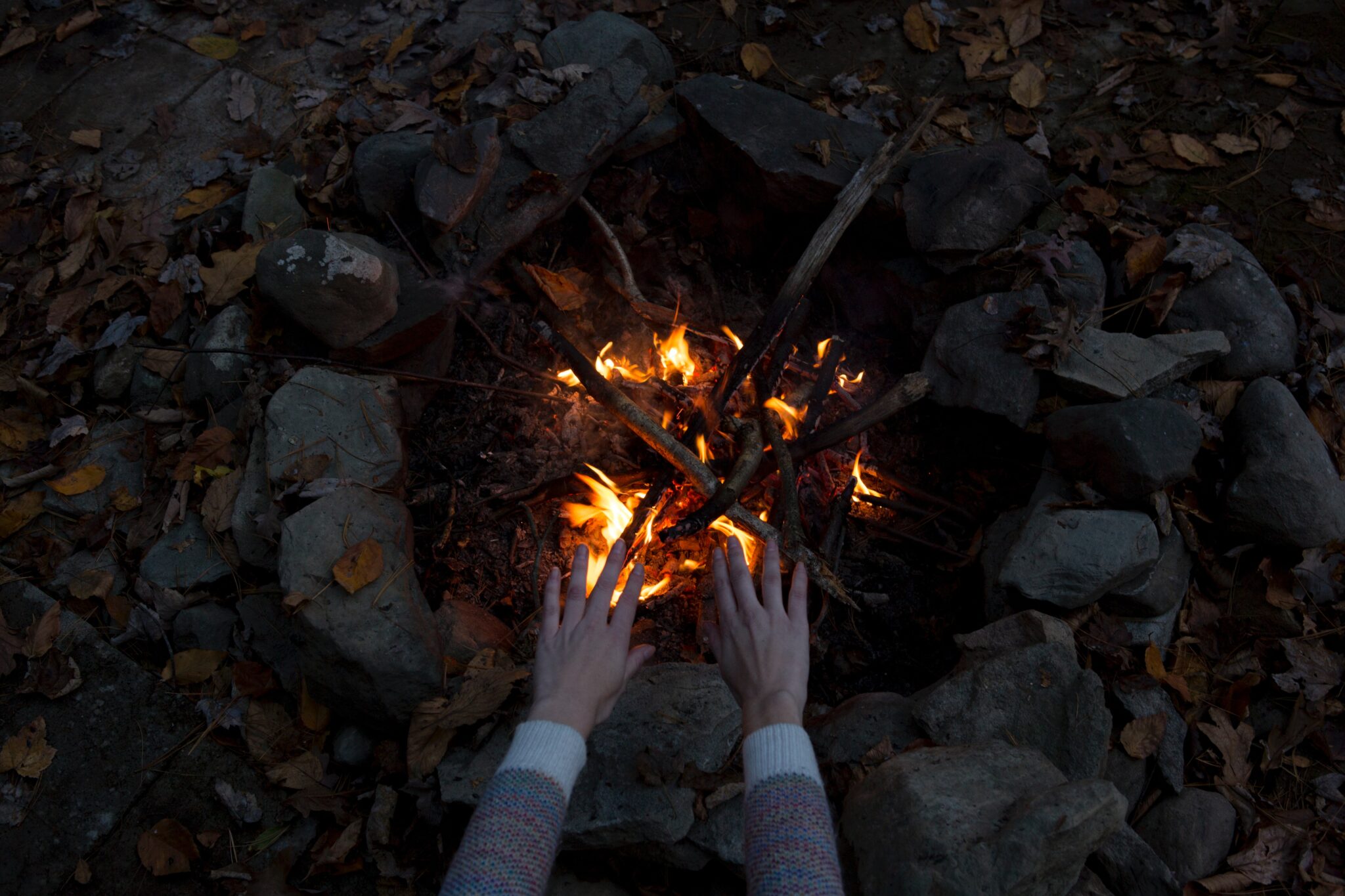
Besides dressing warm for the cold weather, having a place you can sit by to stay warm outside is also ideal. During the winter, fire ban restrictions have been lifted, so this is a great opportunity to have a big toasty fire for roasting marshmallows. Make sure your firewood is dry. Collecting wet firewood can make it difficult to ignite a fire. Ensure you bring a fire starter as well, such as laundry lint, shredded newspaper, or fire starter sticks. If you are the type of person who does not enjoy building and trying to start a fire, you can also bring a propane fire pit. These fire pits have adjustable settings, so the higher the flames give you the ability to in a room enclosure on a lower setting. Due to the duration, you will be using it, it is wise to bring along a dedicated 20 Lb propane tank, this way you can ensure you will not run out of propane during your trip. Lastly, another great option is a propane patio heater. These are great to use inside a room enclosure to help trap the heat and give you the space to move around to do some camping activities.
Bring a coffee machine
A nice hot cup of coffee, tea, or hot chocolate is the perfect way to start your day. It can also warm you up when you come in from a day of adventure and gives you the energy boost you need. If you choose to bring milk and creamer, remember that they will freeze at around -1°C but may go bad in the heat of your trailer. An insulated cooler will regulate the temperature of your perishables and keep them fresh.
Winter camping in your teardrop trailer can be a fun and exciting adventure if you are prepared. To ensure a safe and comfortable trip, it is essential to have an insulated and well-heated trailer, protect your water supply, plan your route carefully, consider using tire chains and dressing in layers. Additionally, setting up an awning or room enclosure and bringing along warm bedding can help to provide extra protection from the elements. By following these tips and guidelines, you can enjoy a successful and enjoyable winter camping trip in your teardrop trailer.
Q & A with @gertrudethecamper
Q: What are the top locations you enjoy visiting for fall/winter camping?
A: Short answer – anything with shore power. Our first camp with Gertrude (Gertie for short), was at Manning Park over Christmas 2019. It was -15 C and we were off grid for one night. We had already planned to move the next day to Sunshine Valley RV park and were glad we did. Plugging in gave us none stop heat.
Q: Why do you like visiting these locations?
A: Again – shore power!! But aside from that, the Manning area has a great variety of offerings and the snow is dry and deep. Another spot we enjoy is Porteau Cove (Sea to Sky Highway), mostly because it is close to town … oh, and it has shore power 😉
Q: What are some destinations you would like to travel to in the future for fall/winter camping?
A: We’ve got our eye on Arizona or Oregon. Washington State is also beautiful but perhaps too similar to BC.
Q: What are some winter essentials you always bring with you?
A: Hot water bottles are the lifeblood of our existence. Throw a couple of those suckers in the bed 30 minutes ahead of time and things are nice and toasty when you climb in. And for outside in the ARB awning we have a propane heater that takes the edge off. Actually, the gas heater is great for off-grid camping. The instant heat is marvellous for midnight bathroom breaks. Toques, gloves, camp slippers, base layers, hand/feet warmers, … basically everything we can fit in the car.
Q: What are some towing essentials you always bring with you?
A: We make sure to pack warning triangles, and a flat repair kit. A tire lost air in -25 C which we discovered happens simply because the rubber is more brittle at those temperatures and it only takes a sharp stone to create a hole. We also carry chains for the trailer, but haven’t needed them yet.
Q: What do you enjoy most about winter camping?
A: The lack of bugs is the first thing that comes to mind. It is wonderful not having to smear bug repellant all over ourselves and deal with the itchy bites for weeks after. And when it comes to being surrounded by fresh deep snow, the silence takes you further away than where you are.
Q: What do you least like about winter camping?
A: It gets tricky when snow accumulates on the awning room, especially if the snow is followed by rain. Keeping the load light is important to prevent a catastrophe. As long as our warming gear (see above) is working and our extremities are cozy, life is great, but as soon as the chill hits, life can get miserable pretty quick. But these are the challenges that make winter camping all the more interesting.
Q: What is one favourite meal that you enjoy cooking to keep you warm on a snowy day?
A: Soups and stews are easy to heat up and adding smash or rice helps. Although some might argue that it isn’t food, we find a sip of whiskey helps warm the heart 😉
Q: What are some of your favourite activities you do during winter camping?
A: Cross-country skiing is a new found love. Manning Park has a nice variety of terrain for different abilities. We’ve also broken trail with snow shoes, while carrying 40lb backpacks for an overnight camp at Windy Joe (Manning Park). And when we are feeling lazy, there is nothing better than reading a book in the comfort of Gertie’s bed.
Q: Do you have any advice for campers who want to try winter camping for the first time?
A: Check the weather before you go. We’ve discovered our threshold. It’s the tri-factor of wind, rain and cold. There is nothing more challenging than having a tarp blowing in the wind at 2 am, all while the rain and sleet beat down on you at 0oC or below. We’ve cancelled many trips and forgone the deposit because the weather changed suddenly (as it does). Sometimes it’s just better to stay at home.
Q: If our readers want to follow Gertie on her adventures, where can they find you?
A: Gertie and our adventures can be found on Instagram @gertrudethecamper
